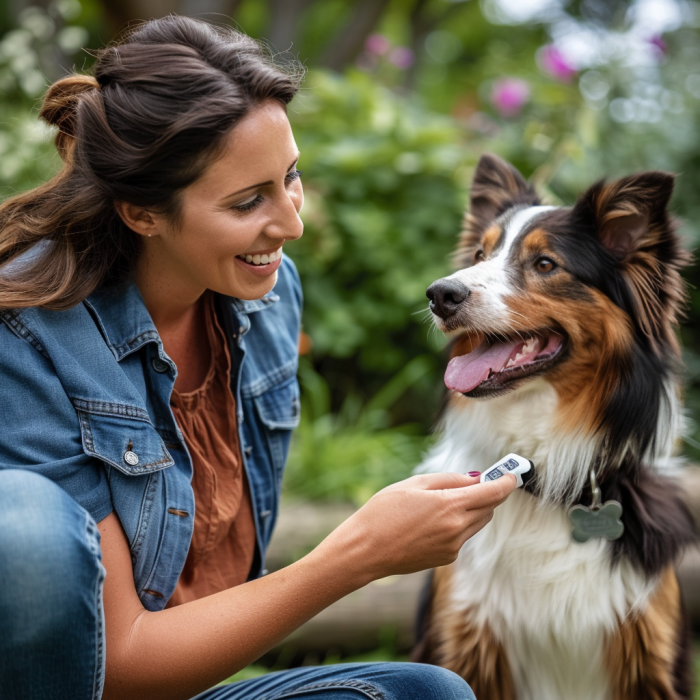How Can You Train Your Dog For Specific Behaviors Effectively?
JUNE 01, 2024

## Introduction: Addressing Common Behavioral Issues
Training your dog effectively requires time, patience, and a clear understanding of your dog's needs. Many behavioral issues, such as jumping, excessive barking, destructive chewing, and pulling on the leash, can be addressed with Positive Reinforcement-Based Training methods. These methods emphasize the use of rewards, such as treats, praise, and play, to encourage desired behaviors. In this guide, we'll delve into specific techniques to tackle four common problems.
## Jumping: Techniques to Prevent Jumping on People
Jumping is a common issue, especially among excitable dogs. It often happens when they greet people. The goal here is to teach your dog that keeping all four paws on the ground is a more rewarding behavior.
1. **Ignore the Jumping**: When your dog jumps, turn away and avoid any eye contact or verbal acknowledgment. Dogs seek attention, and ignoring them when they jump helps them understand that this behavior won't get them what they want.
2. **Reward Calm Behavior**: Immediately reward your dog when they have all four paws on the ground. Use treats, praise, or a favorite toy to reinforce this desirable behavior.
3. **Practice Makes Perfect**: Consistency is key. Practice this exercise regularly, including when you come home and during interactions with guests. This helps reinforce good behavior in various situations.
4. **Use a Clicker**: Incorporate clicker training to mark the exact moment the dog behaves correctly. When all four paws are on the ground, click and then reward.
## Barking: How to Control Excessive Barking
Excessive barking can be challenging and often indicates underlying issues such as boredom, anxiety, or territorial behaviors. Here are steps to control it:
1. **Identify Triggers**: Observe when and why your dog barks. Common triggers include people walking past, other animals, or boredom.
2. **Desensitize and Counter-Condition**: Gradually expose your dog to the stimulus that causes barking in a controlled manner, rewarding calm behavior. For instance, if your dog barks at the doorbell, practice ringing it without opening the door and reward your dog for staying calm.
3. **Teach the 'Quiet' Command**: When your dog starts barking, say 'Quiet' in a calm but firm voice. Wait until they stop barking, even for a second, then reward them. Repeat this consistently.
4. **Provide Mental and Physical Stimulation**: Often, dogs bark out of boredom. Ensure your dog gets enough exercise, playtime, and mental stimulation through games and training sessions.
## Chewing: Redirecting Destructive Chewing
Destructive chewing can cause damage to your home and belongings. Redirect this behavior effectively using these steps:
1. **Provide Appropriate Chew Toys**: Make sure your dog has access to safe and engaging chew toys. Rotate them to keep your dog interested.
2. **Supervise and Confine**: Until your dog learns what is appropriate to chew, supervise them closely. When you cannot supervise, confine them in a safe area with their chew toys.
3. **Redirect to Appropriate Chew Toys**: If you catch your dog chewing something inappropriate, calmly redirect their attention to a suitable chew toy. Reward them when they engage with the toy.
4. **Use Deterrent Sprays**: There are sprays available that taste unpleasant to dogs. Apply these to items you don't want your dog to chew, combined with redirection to appropriate chew items.
## Pulling on Leash: Teaching Proper Leash Manners
Proper leash manners make walks enjoyable for both you and your dog. Use these techniques to teach your dog not to pull on the leash:
1. **Stop and Be Still**: When your dog starts to pull, stop walking and stand still. Wait until the leash slackens, then continue walking. This teaches your dog that pulling won't get them where they want to go.
2. **Use High-Value Rewards**: When your dog walks beside you or stops pulling, reward them with treats, praise, or play. High-value rewards motivate your dog to stay close and walk politely.
3. **Practice 'Heel' and 'Let's Go' Commands**: Consistently use cues like 'Heel' for walking beside you and 'Let's Go' to start walking. Reward compliance with these commands.
4. **Consider a No-Pull Harness**: Tools like no-pull harnesses or head collars can help manage pulling while you train proper leash manners.
## Conclusion
Training your dog to overcome behavioral issues like jumping, barking, chewing, and pulling on the leash requires consistency, patience, and positive reinforcement. By employing these humane, science-based techniques, you foster a stronger bond with your dog and ensure a happier, healthier life together. Remember to be patient and celebrate small victories along the way; training is a journey you and your dog can enjoy together.
More in Training - Positive Reinforcement-Based
June 01, 2024
How Can You Train Your Dog For Specific Behaviors Effectively?
May 29, 2024
How Can You Unlock the Heart of a Bulldog? A Guide to Understanding and Training
March 08, 2024
How Can You Make Easter Unforgettable for Your Yorkie?
March 02, 2024
Unleashing the Joy: Discovering the Labrador Retriever's World Through Training
February 19, 2024
How Does Positive Reinforcement Shape a Cane Corso?
February 13, 2024
How to Make Valentine's Day Special for Your Dog with Positive Reinforcement
January 30, 2024
Why Choose a Poodle? The Intelligence and Versatility of This Breed Explained
January 26, 2024
Deciphering Doggy Yawns: Understanding Your Pet''s Silent Language